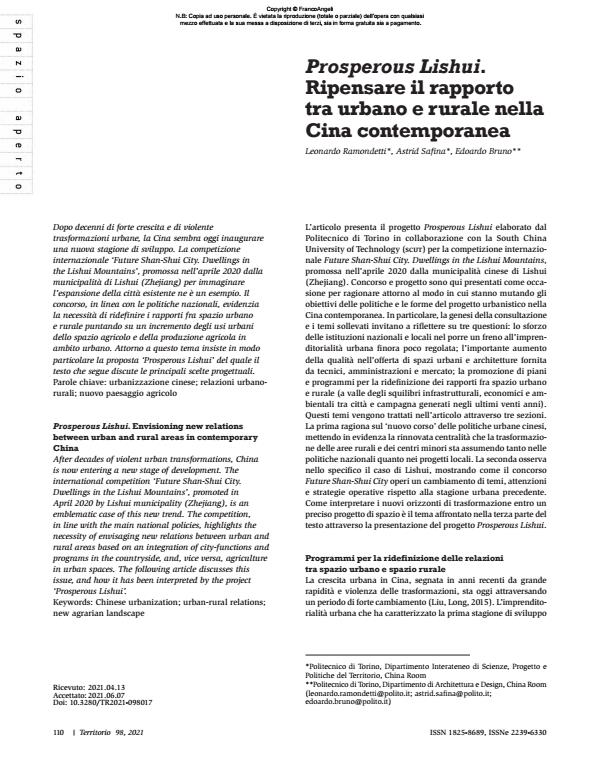Prosperous Lishui. Envisioning new relations between urban and rural areas in contemporary China
Journal title TERRITORIO
Author/s Leonardo Ramondetti, Astrid Safina, Edoardo Bruno
Publishing Year 2022 Issue 2021/98
Language Italian Pages 13 P. 110-122 File size 882 KB
DOI 10.3280/TR2021-098017
DOI is like a bar code for intellectual property: to have more infomation
click here
Below, you can see the article first page
If you want to buy this article in PDF format, you can do it, following the instructions to buy download credits

FrancoAngeli is member of Publishers International Linking Association, Inc (PILA), a not-for-profit association which run the CrossRef service enabling links to and from online scholarly content.
After decades of violent urban transformations, China is now entering a new stage of development. The international competition ‘Future Shan-Shui City. Dwellings in the Lishui Mountains’, promoted in April 2020 by Lishui municipality (Zhejiang), is an emblematic case of this new trend. The competition, in line with the main national policies, highlights the necessity of envisaging new relations between urban and rural areas based on an integration of city-functions and programs in the countryside, and, vice versa, agriculture in urban spaces. The following article discusses this issue, and how it has been interpreted by the project ‘Prosperous Lishui’.
Keywords: Chinese urbanization; urban-rural relations; new agrarian landscape
Leonardo Ramondetti, Astrid Safina, Edoardo Bruno, Prosperous Lishui. Ripensare il rapporto tra urbano e rurale nella Cina contemporanea in "TERRITORIO" 98/2021, pp 110-122, DOI: 10.3280/TR2021-098017